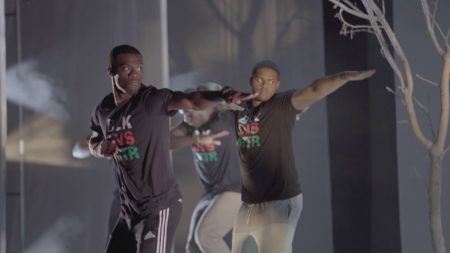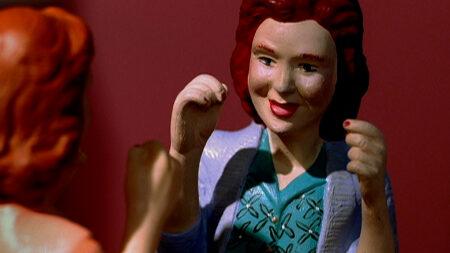Continue playing
(Time remaining: )
Play from beginning
Continue playing "{{ controller.videos[controller.getVideo(controller.currentVideo)].segmentParentTitle}}"
{{controller.videos[controller.getVideo(controller.currentVideo)].title}} has ended.
Dancer Greg SinacoriLaurie Simmons
The Music of Regret,(2006) Laurie Simmons’ first film, extends her photographic practice to performance; incorporating musicians, professional puppeteers, Alvin Ailey dancers, Hollywood cinematographer Ed Lachman, and actress Meryl Streep within her three-act “mini-musical.” Forty minutes long, the work features an ensemble of dancing objects, including a pocket watch and a gun.
In this film, dancer Greg Sinacori, who plays the role of “The House,” discusses the effect of the costumes’ weight and form on his dancing and movement. “At first, I didn’t know what being a house was going to entail,” Sinacori confessed during preparations for the performance.
Credits
Producer: Susan Sollins & Nick Ravich. Camera: Joel Shapiro. Sound: Roger Phenix. Editor: Mark Sutton. Artwork courtesy: Laurie Simmons. Thanks: Alvin Ailey American Dance Theater.
Closed captionsAvailable in English, German, Romanian, Italian, Japanese, Korean, Chinese, Italian
Through the Art21 Translation Project, multilingual audiences from around the globe can contribute translations, making Art21 films more accessible worldwide.
Interested in showing this film in an exhibition or public screening? To license this video please visit Licensing & Reproduction.
Laurie Simmons stages photographs and films with paper dolls, finger puppets, ventriloquist dummies, and costumed dancers as “living objects,” animating a dollhouse world suffused with nostalgia and colored by an adult’s memories, longings, and regrets. Simmons’s work blends psychological, political, and conceptual approaches to art making—transforming photography’s propensity to objectify people, especially women, into a sustained critique of the medium. Mining childhood memories and media constructions of gender roles, her photographs are charged with an eerie, dreamlike quality.
Dance & Collaboration
Laylah Ali
Carrie Mae Weems
Janine Antoni
Artwork Survey: 2000s
Laurie Simmons
Laurie Simmons




